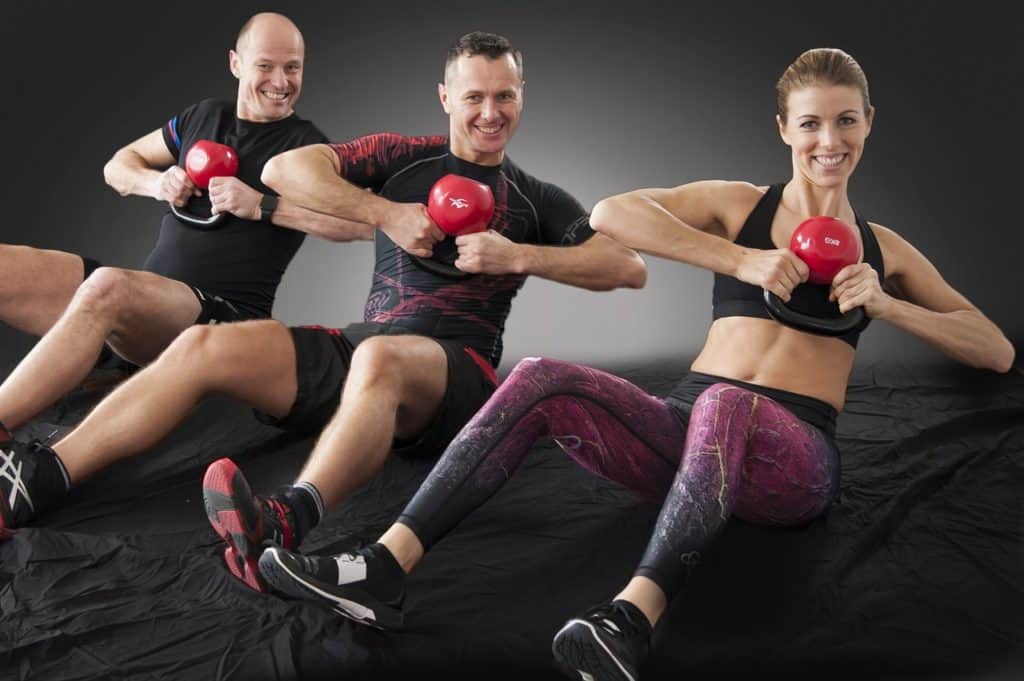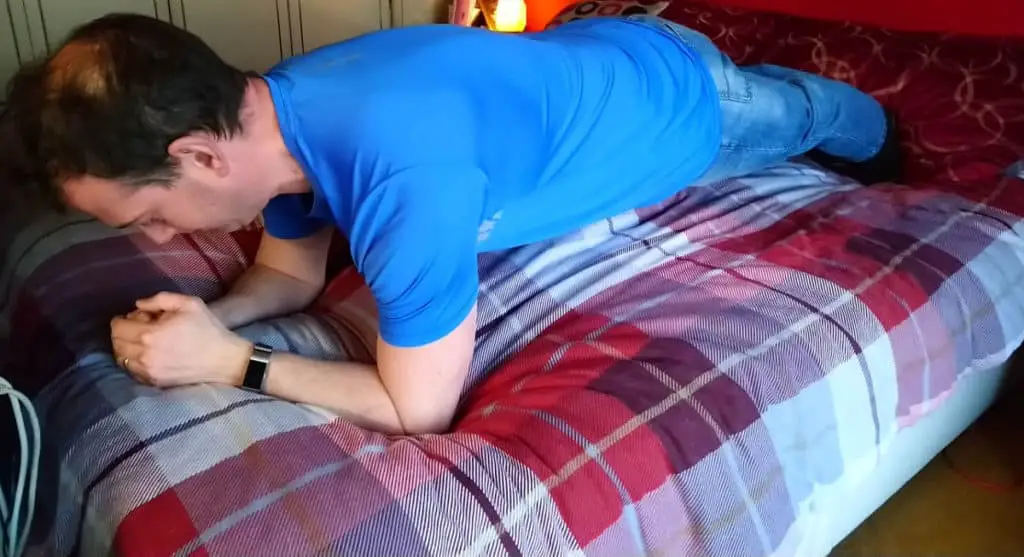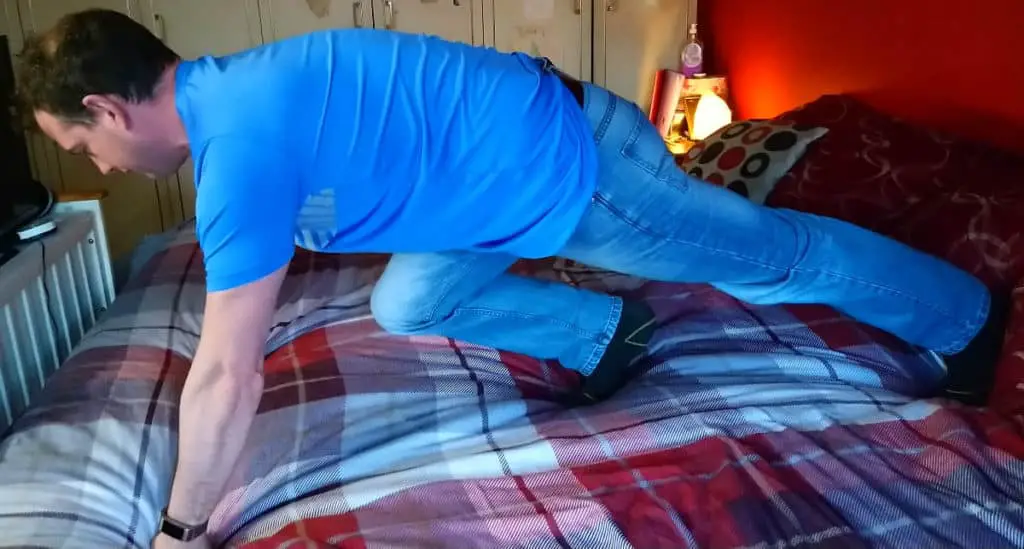Doing sit-ups in bed combines two things that any fitness enthusiast would immediately question. Yet, they present an absolute convenience whose appeal is pretty obvious; you get to work out your core without leaving the warmth of your bed. So, should you do sit-ups in bed?
Yes. You can do sit-ups in bed and have actual gains as you seek to kick start your day. The questions surrounding doing sit-ups in bed are whether the sit-ups will be effective, and there is also the general concern of whether sit-ups are safe or the best exercise for the abs.
Contrary to what you may think, the mattress’ unstable surface enables you to do far more effective sit-ups since they allow you to engage the small muscles of your back while at the same time working your bigger ones.
Just a word of warning traditional sit-ups maybe be harder to perform in bed. You might want to try the other exercises mentioned below. Also, not all mattresses might not be suitable.
The slightly unstable surface helps with keeping your balance while also padding your lower back, helping relieve any pain in the area.
Working out in bed can be a great warm-up and help you get over the initial body and mind resistance to exercises, especially when you have a new regimen to use in the morning. It helps ease you into the mood while reaping benefits too.

The Risks Associated with Sit-ups and their Benefits
In recent times sit-ups have gained a bad rep from many fitness experts and medical institutions. According to critics of the exercise, it fails on three metrics;
- It is challenging for most people to do it right
- It employs a movement that does not reflect real day to day life hence can cause more harm
- Places the lower back under undue pressure and poses a higher risk of lower back pain or slipping discs.
- It is a time sucker requiring prolonged use and more reps to achieve the results.
This criticism has seen what was once the go-to exercise for most looking for stronger abs and the core take a back seat. Even the U.S Military for which sit-ups were a staple part of the physical tests dropped it out of their training following a study by Stuart McGill. The fear was that sit-ups caused many of the injuries resulting from the physical routines.
Another study by Harvard Medical School has blamed the exercise for disc damage and pain in the lower back. Yet, a quick review of the research shows that sit-ups do have tangible benefits to your core and general health.
What are the Benefits of Sit-ups
1. Stronger Core Strength
You have better core strength when doing sit-ups, which in turn helps increase your efficiency and performance when engaged in other activities. It also helps reduce your risk of injuries and back pain.
2. Improved Muscle Mass
According to a couple of research works, sit-ups can lead to improved strength and muscle mass in the abdominal and hips areas. It can also be used to evaluate muscle loss, and in older people, it can help prevent the effects of sarcopenia.
3. Improved Athletic Performance and Physical Stability
A strong core is necessary if you are looking at optimum performance levels in any sport or physical activity. It is also vital for endurance in these activities. A strong core allows you to carry your body weight and offers you stability and the right form and posture.
The lower back muscles and your hip muscles work with the abdominal muscles to provide support to your pelvis, offering you balance and preventing you from falling when moving.
Your shoulders and spine are also kept in the correct alignment, and this helps you achieve a good posture. A good posture leads to higher energy levels and better breathing.
4. Better Flexibility
The movement you generate as you move your spine and hips during sit-ups helps you rid your body of stiffness in these major muscles. As a result, the back is more flexible and not always under tension and has a broader range of motion. The flexibility also results in better circulation in the body.
5. Strengthen Your Diaphragm
One study examining the effects of abdominal exercises by measuring diaphragmatic pressure showed that sit-ups could have a positive effect on strengthening the diaphragm. A strong diaphragm offers better breathing patterns and helps you have longer endurance in physical activities.
6. Better Mental and Overall Wellbeing
Sit-ups have been shown to lead to better concentration, and the better breathing and circulation they promote also allows essential nutrients to get to the brain. Sit-ups are also useful in alleviating stress and depression and energizing your body.

How to do Sit-ups Correctly and Safely
Going through different studies on the risks and benefits of sit-ups, it becomes evident that the primary reasons for its associated problems are poor form and doing too many. The recommended number of sit up to do according to a study is 60 per session. With that in mind, the next thing to learn is the right form. Here are the steps for doing a sit-up correctly on any surface.
Don’ts
- Do not anchor your legs as you do sit-ups
- Do not tuck in your neck as it causes undue strain
- Do not rush the sit-ups as you compromise on form
Do’s
- When you lie on your bed, push your pelvic region up to keep the lower back flat on the bed in a posterior tilt that is safe for your discs and maintain that position whenever you lower you back
- Keep your neck in line with the spine facing the ceiling diagonally and engage your core muscles. While at the starting position inhale
- And as you rise, exhale and engage the abdomen muscles to lift you and not the hip flexors and keep the shoulders relaxed.
- Ensure your lower back touches the surface entirely by maintaining a posterior tilt
- Inhale and lower your back slowly to the starting position keeping your abdominal muscles engages and ready for the next repetition, all the while maintaining a posterior tilt.
Alternative Sit-ups
Traditional sit-ups are not the only way to do sit-ups, especially in bed. If you are having issues maintaining the required form of sit-ups, you can check out its variations, which may be easier to adopt or even challenge you more, especially on balancing. Some sit up variations include;
- Hands to heels exercises
- Straight leg sit-ups
- Butterfly sit-ups
- V-ups
- Oblique V-ups
- Weighted sit-ups
- Russian twist in a V-sit up position
Other Exercises You Can do in Bed
Beyond just abdominal exercises, there is a wide range of different exercises you can do in bed, especially for your arms, legs, glutes, back, and general core. You can start with the ones listed below, and once you master them, then move to harder variations.
- Arabesque leg lifts
- Push-ups
- Arm extension to shoulder tap
- Stretch exercises
- Marching leg raises
- Dolphin Plank
- Bridge
- Leg lifts
Alternative Exercises to Sit-ups in Bed
If for any reason you are not comfortable doing sit-ups
Forearm Planks

Forearms planks are great exercises for your abs and strengthening your core. Using forearms instead of arms makes this exercise much safer to do on a soft surface like your bed.
Scissor Legs

These target your lower abs and legs. You lie on your back with hands beneath the hips and raise your feet straight in the air with the toes pointing up. From this position, gently lower one leg while engaging your core, then when almost touching the surface, bring it back up and do the same for the opposite leg for a complete rep.
Side Planks with a Twist

From the normal side plank position supporting your upper body with the forearm, stretch your free arm high to the ceiling while pushing your hips as high as you can. Lower the arm and twist from your waist, passing the arm underneath your body and resume starting position.
Suspended Mountain Climbers

This variation targets the core more than the traditional form. You start from a push-up position and then move your right knee to your chest and then make a jump switching legs this time, bringing your left knee to your chest and placing your right foot back. It will need to be performed quickly but with control.
Elbow to Knee Sit-ups

This is a great option if you want a gentle spinal twist and are looking to work out the internal and external obliques. You lie on the bed with your hand interlocking at the base of the skull and your legs raised and bent at the knees. Twist your torso bringing one elbow in touch with the opposite knee and repeat for the other side for a complete repetition.
Conclusion
Doing workouts in bed is a great way to ensure you warm up and are motivated for your morning exercise routine.
It is also a great way to add more calorie-burning opportunities in your day while reaping other health benefits without having to leave the bed.
The bed offers an extra challenge while also being kind and soothing to your major body muscles. Execute the sit-ups in a slow, sure manner focusing on the right form and do not do many repetitions. For more effectiveness in your bed workouts, integrate the other examples given above for a wholesome routine.



